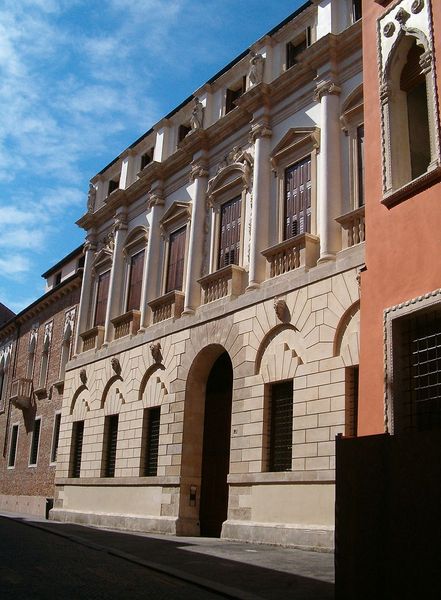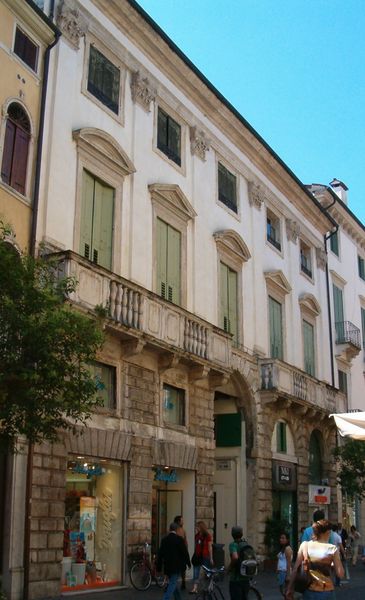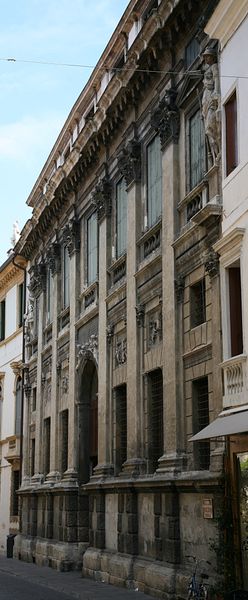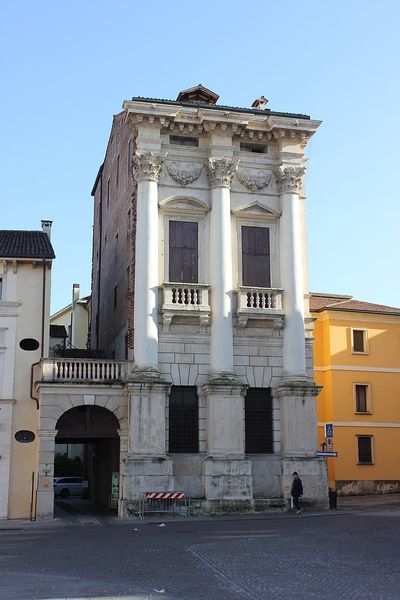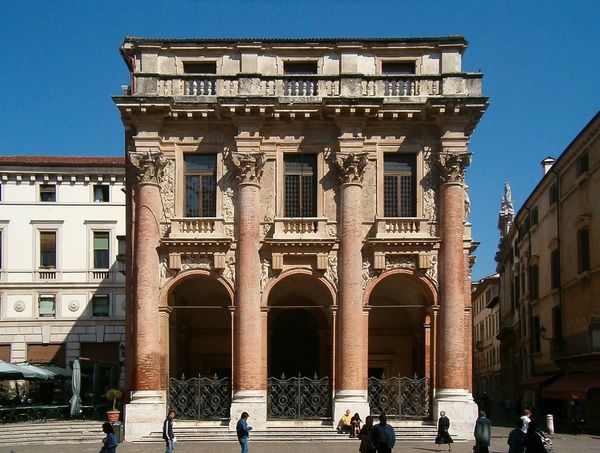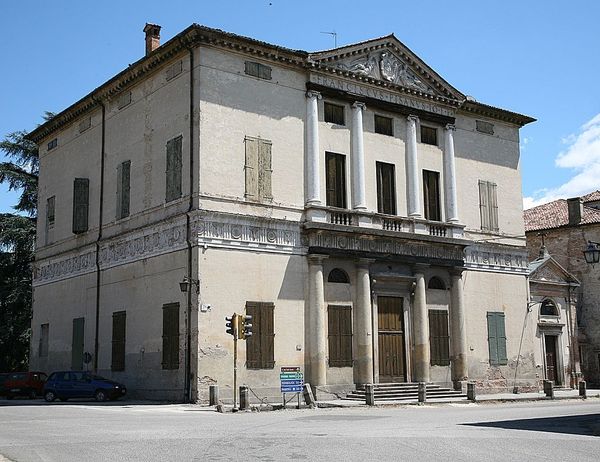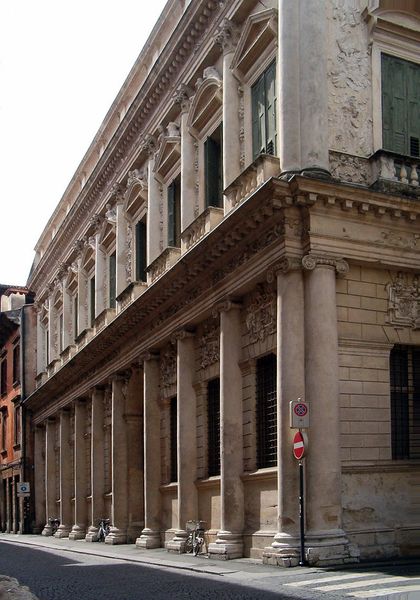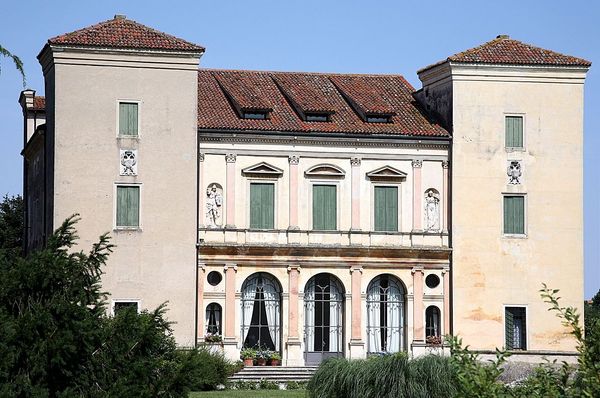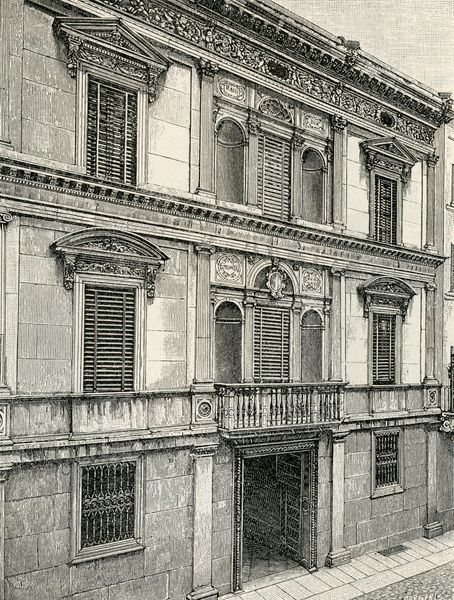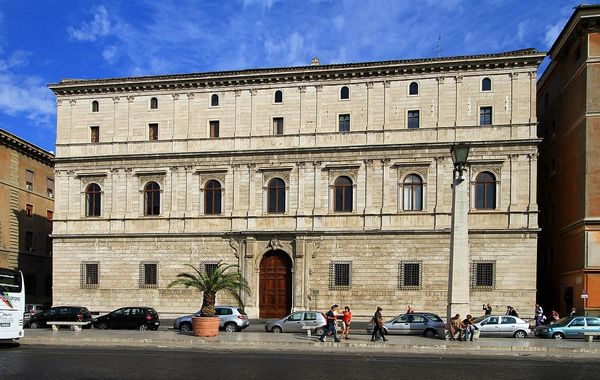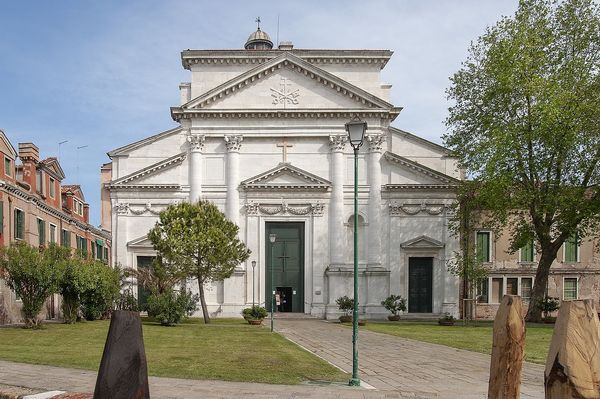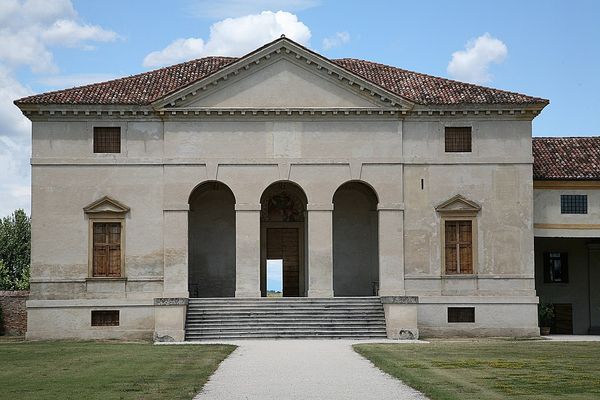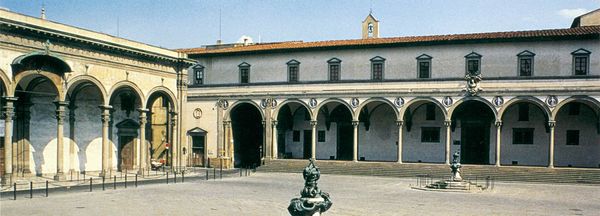
plein-air, photography, site-specific, architecture
#
portrait
#
public art
#
plein-air
#
historic architecture
#
photography
#
site-specific
#
italian-renaissance
#
architecture
Copyright: Public domain
Curator: Looking at this photograph of Casa Cogollo in Vicenza, completed around 1559, one immediately senses a monumentality in its architecture. Andrea Palladio’s vision in this site-specific creation marks an interesting point in Italian Renaissance design. Editor: It’s a somewhat austere monumentality though, isn’t it? The plain façade above the ornate entrance suggests a reserved, almost institutional power, lacking the warmth of a home, despite the presence of balconies and shutters which are designed for residents. It also seems squashed somewhat by its neighbours. Curator: Well, consider the history! Palladio, in designing Casa Cogollo, operated under constraints both of space and budget, tasked with revitalizing an existing structure, fitting it into a dense urban environment and reflecting an ambitious agenda to update architectural language of Vicenza at the time. It certainly demonstrates the Italian Renaissance emphasis on incorporating classical orders within a more modern aesthetic. Editor: Yes, I think it also prompts a look at ideas around public and private space in the 16th century. Look how this asserts an almost civic grandeur on what would be an individual's residence. This wasn’t just someone’s home; it was a statement, participating in and perpetuating political power of Vicenza as the jewel of the Veneto region at that time. Did such gestures promote civic unity, or were they subtle reminders of socio-economic divides? Curator: It definitely provokes interesting questions about the function of architecture in society! And to view Palladio’s role through this lens challenges notions about artistic innovation, it shows how he engaged in dialogues of power that go well beyond aesthetics, engaging patrons, city officials, and even everyday passersby. Editor: Agreed! Analyzing the urban role of Casa Cogollo invites crucial discussions on visibility, accessibility, and the politics embedded within the design itself. I see now how this wasn’t simply building; it was indeed statecraft. Curator: Indeed. Looking through that lens enhances how we engage with and read art history itself.
Comments
No comments
Be the first to comment and join the conversation on the ultimate creative platform.
